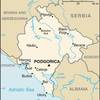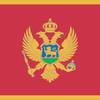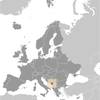Montenegro [+]Compare [E]dit [H]istory
Aliases: Crna Gora, People's Republic of Montenegro, Republic of Montenegro, Socialist Republic of MontenegroObject «Montenegro» was created due to
Add new object to «Montenegro» or move existing objects here.
Object «Montenegro» has attributes [Show empty attributes][Hide empty attributes]
| Attribute | Value |
|---|---|
| Geography | |
| Area | 13,812 km² |
| Continent | Europe |
| Land area | 13,452 km² |
| Water area | 360 km² |
| Land boundaries | 680 km |
| Border countries |
|
| Coastline | 293.5 km |
| Mean elevation | 1,086 m |
| Lowest point | 0 m |
| Highest point | 2,522 m |
| People | |
| Population | 609,859 |
| Official languages |
|
| Religion | Orthodox |
| Government | |
| Long country name | Add |
| Short country name | Montenegro |
| Long local name | Add |
| Short local name | Crna Gora |
| Former name |
|
| Government type | Parliamentary republic |
| Capital | Podgorica |
| Economy | |
| GDP (PPP) | 11,080,000,000 USD |
| GDP (OER) | 4,784,000,000 USD |
| GDP (real growth rate) | 4.3 % |
| GDP - per capita (PPP) | 17,800 USD |
| Gross national saving | 13.2 % of GDP |
| Labor force | 273,200 |
| Unemployment rate | 16.1 % |
| Population below poverty line | 8.6 % |
| Budget revenues | 1,780,000,000 USD |
| Budget expenditures | 2,050,000,000 USD |
| Military expenditures | 1.66 % of GDP |
| Taxes and other revenues | 37.2 % of GDP |
| Budget surplus or deficit | -5.6 % of GDP |
| Public debt | 67.2 % of GDP |
| Inflation rate | 2.4 % |
| Central bank discount rate | Add |
| Commercial bank prime lending rate | 6.81 % |
| Stock of narrow money | 1,284,000,000 USD |
| Stock of broad money | 2,370,000,000 USD |
| Stock of domestic credit | 3,239,000,000 USD |
| Market value of publicly traded shares | 3,425,000,000 USD |
| Current account balance | -780,000,000 USD |
| Exports | 422,200,000 USD |
| Imports | 2,618,000,000 USD |
| Reserves of foreign exchange and gold | 1,077,000,000 USD |
| External debt | 2,516,000,000 USD |
| National currency | euros |
| National currency (code) | EUR |
| National currency (symbol) | € |
| National currency rate to USD | 0.885 |
The use of the name Crna Gora or Black Mountain (Montenegro) began in the 13th century in reference to a highland region in the Serbian province of Zeta. The later medieval state of Zeta maintained its existence until 1496 when Montenegro finally fell under Ottoman rule. Over subsequent centuries, Montenegro managed to maintain a level of autonomy within the Ottoman Empire. From the 16th to 19th centuries, Montenegro was a theocracy ruled by a series of bishop princes; in 1852, it transformed into a secular principality. Montenegro was recognized as an independent sovereign principality at the Congress of Berlin in 1878. After World War I, during which Montenegro fought on the side of the Allies, Montenegro was absorbed by the Kingdom of Serbs, Croats, and Slovenes, which became the Kingdom of Yugoslavia in 1929. At the conclusion of World War II, it became a constituent republic of the Socialist Federal Republic of Yugoslavia. When the latter dissolved in 1992, Montenegro joined with Serbia, creating the Federal Republic of Yugoslavia and, after 2003, shifting to a looser State Union of Serbia and Montenegro. In May 2006, Montenegro invoked its right under the Constitutional Charter of Serbia and Montenegro to hold a referendum on independence from the two-state union. The vote for severing ties with Serbia barely exceeded 55% - the threshold set by the EU - allowing Montenegro to formally restore its independence on 3 June 2006. In 2017, Montenegro joined NATO and is currently completing its EU accession process, having officially applied to join the EU in December 2008.
Similar objects
Most often compared with
Everyone can something to edit or add.
There were 2 edits, no edits waiting approval. Last edited by Guest_1196(-101), May 26, 2020 (48 fields were changed)
Help · Contact us · Disclaimer · Contributors · Developers · Donate


